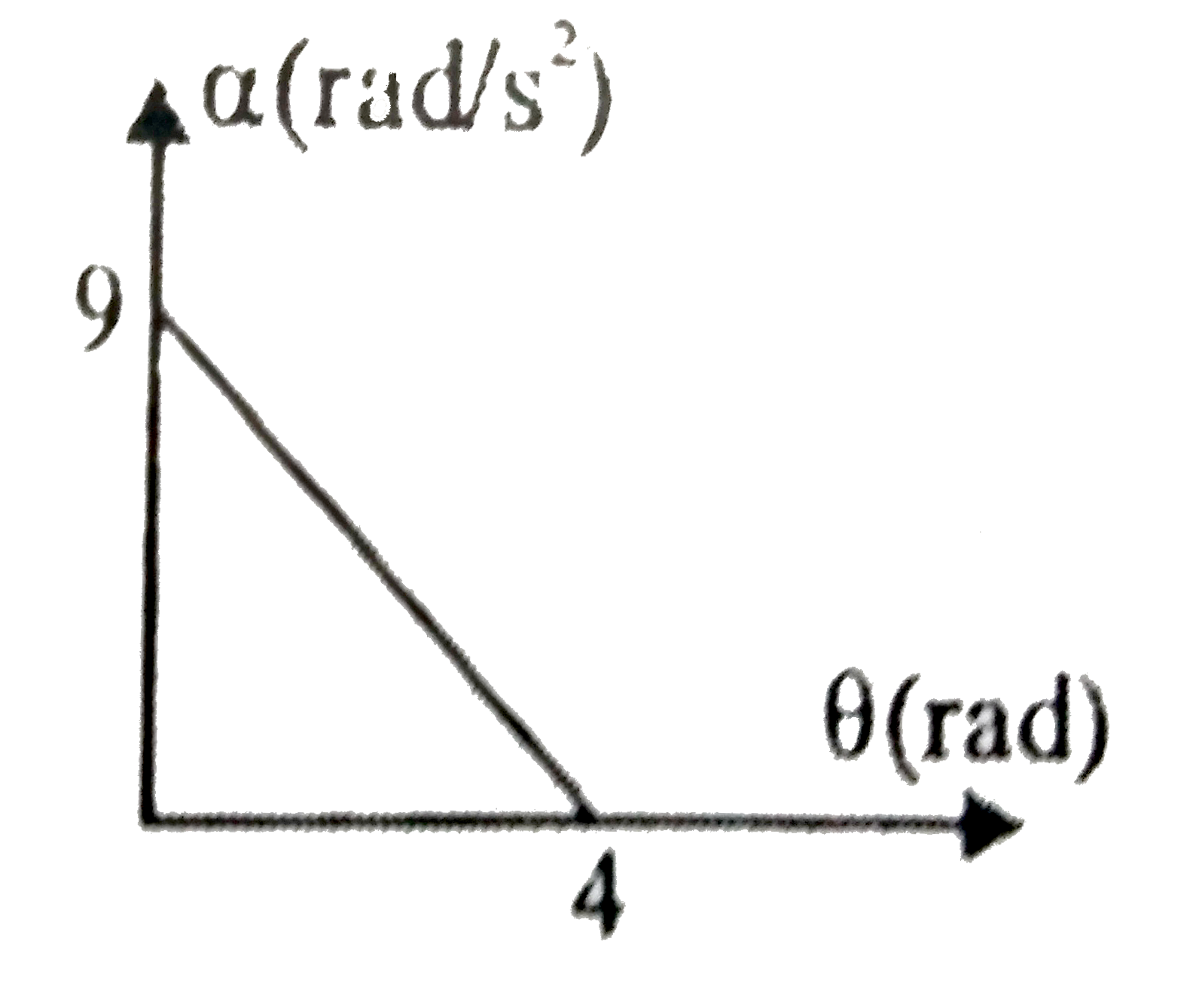A particle starts moving in a non-uniform circular motion, lies angular acceleration as shown in figure. The angular velocity at the end of 4 radian is given by ω rad/s then find the value of ω.

The correct Answer is:6
Step by step video, text & image solution for A particle starts moving in a non-uniform circular motion, lies angular acceleration as shown in figure. The angular velocity at the end of 4 radian is given by omega rad/s then find the value of omega. by Physics experts to help you in doubts & scoring excellent marks in Class 12 exams.
Topper's Solved these Questions
- BOOK - ALLENCHAPTER - CIRCULAR MOTIONEXERCISE - Dynamics of circular motion8videos
CIRCULAR MOTION
- BOOK - ALLENCHAPTER - CIRCULAR MOTIONEXERCISE - EXERCISE(S-2)6videos
CIRCULAR MOTION
- BOOK - ALLENCHAPTER - CIRCULAR MOTIONEXERCISE - EXERCISE (J-A)6videos
CIRCULAR MOTION
- BOOK - ALLENCHAPTER - BASIC MATHSEXERCISE - Question1videos
BASIC MATHS
- BOOK - ALLENCHAPTER - CURRENT ELECTRICITYEXERCISE - All Questions427videos
CURRENT ELECTRICITY
Similar Questions
A particle starts moving in a non-uniform circular motion and has angular acceleration as shown in the figure. If the angular velocity at the end of 4 rad is given by ω rad/s, then find the value of ω.
'(##CEN_KSR_PHY_JEE_C07_007_Q04##)'View SolutionA particle starts from rest and its angular displacement (in rad) is given θ=t220+t5. Calculate the angular velocity at the end of t=4s.
View Solution
Knowledge Check
- Question 1 - Select One
In nonuniform circular motion, the linear acceleration →a, the angular acceleration, →α, the angular velocity →v the radius vector →r and the angular velocity →ω at any instant are related by the vector equation,
A→a=→α×→r+→ω×→vB→a=→r×→α+→v×→ωC→a=→α×r+→v×→ωD→a=→α×r−→ω×→v - Question 2 - Select One
A particle is in circular motion in a horizotantal plane. It has angular velocity of 10πrad/s at the end of 2 s and angular velocity 15 πrad/s at the end of 4s. The angular acceleration of particle is
A5πrad/s2B2.5πrad/s2C6πrad/s2D16πrad/s2 - Question 3 - Select One
A body rotating with uniform angular acceleration covers 100π (radian) in the first 5 s after the start. Its angular speed at the end of 5 s (in rad/s) is
A40πB30πC20πD10π
A particle starts from rest and moves in a circular motion with constant angular acceleration of 2rads−2. Find
(a) Angular velocity
(b) Angular displacement of the particle after 4s.
( c) The number of revolutions completed by the particle during these 4s.
(d) If the radius of the circle is 10cm, find the magnitude and direction of net acceleration of the particle at the end of 4s.View SolutionA particle is moving in a circle of radius 0.3 . Calculate its linear acceleration at the instant when its angular velocity is 1rad/s and angular acceleration is 4rad/s2
View SolutionCircular motion: angular velocity | Angular acceleration | Uniform circular motion: radial acceleration
View SolutionCircular motion: angular velocity| Angular acceleration| Uniform circular motion: radial acceleration
View SolutionA particle is revolving in a circular path of radius 2 m with constant angular speed 4 rad/s. The angular acceleration of particle is
View Solution

